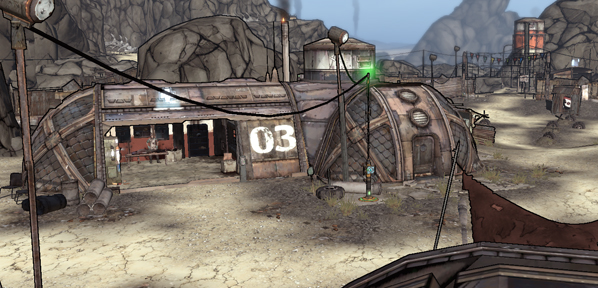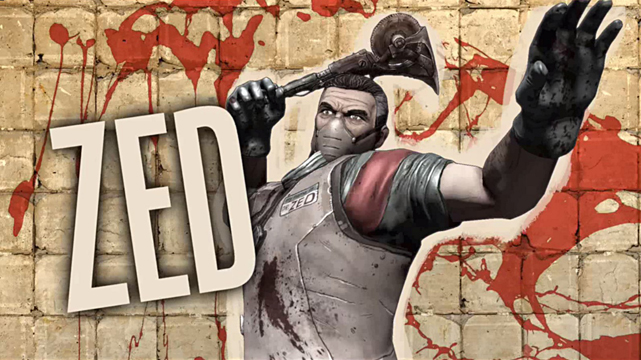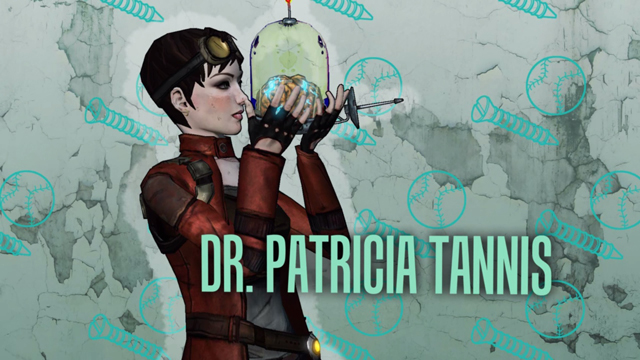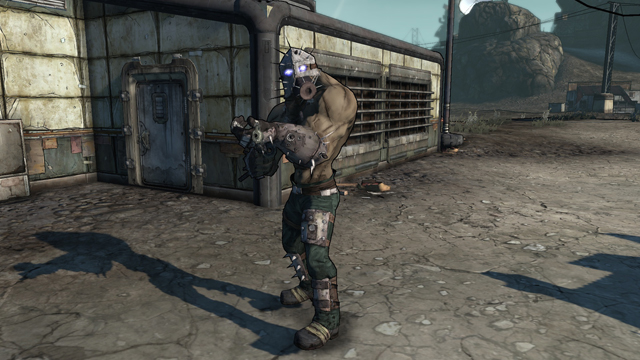Trending
Opinion: How will Project 2025 impact game developers?
The Heritage Foundation's manifesto for the possible next administration could do great harm to many, including large portions of the game development community.

Featured Blog | This community-written post highlights the best of what the game industry has to offer. Read more like it on the Game Developer Blogs or learn how to Submit Your Own Blog Post
A look at the world of Borderlands. Re-posted from my blog at gamemakeworld.wordpress.com

For the second post I want to talk about a game at the other end of the spectrum from Paladin’s Quest/Lennus, which I thought also did a great job with its worldview. Borderlands was developed by Gearbox Software using a modified version of Unreal Engine 3, and was published in 2009 by 2K Games for Playstation 3, Xbox 360, and PC/OSX.
WORLDVIEW: Trapped in a post-apocalyptic but cartoonishly silly mental institution. Game elements establish and maintain a tone of "there is something big going on, and its all kind of silly, scary, or maybe meaningful, but there’s no choice but to go along with these crazy people’s demands."
For me, one of the most thaumatic moments was when enemy bandits drove away the parked car that a friend and I had been riding around in. We didn’t notice until they drove by and started attacking us with it. At that moment, half-concerned and half-laughing, I was like “Omigosh, this really IS a kookoo land of silly chaos.”
GOALS and RULES
A huge part of the game is “looting”- finding new weapons, either after defeating enemies or in item boxes. This helps create an atmosphere of chaos and surprise. You never know when or where you’ll find a powerful new weapon, and with seemingly endless possible combinations of weapon characteristics, there is always something new to be discovered. Stumbling upon a good find always feels like a treat.
The mission system is standard: you accept various “fetch quest” or “defeat boss”-type missions, complete them, and then collect money or item rewards afterwards. In games that claim to have an extremely complex and realistic world, simple missions systems like this can feel jarring; in Borderlands, however, it makes sense given the worldview of “you are trapped among crazy people and must obey their particular and irrational demands.”
When a serious “deep” character in another game asks you do to a straightforward and arbitrary task to advance the story, for example, it can break whatever depth the developers were going for, but when Dr. Patricia Tannis (an insane scientist in Borderlands) asks you to gather some random mechanical parts for her nonsensical plan, it feels a lot more “right.”
Similarly, the limits of space can feel jarring in games that supposedly offer a “huge, wide-open world” (ie. you suddenly run into an invisible wall where you can go no further), but this also works in Borderland. Here you’re trapped in an arbitrarily divided up loony bin with a bunch of psychopaths, required to do their bidding and living at their whims. There's no way out besides following their orders and advancing to the next area.
In other words, Borderlands’ worldview is suited to and works with genre conventions, instead of going for a level of realism and complexity that doesn’t suit the medium. In the end, Borderlands’ world feels a lot more believable and real than many other games’.
GRAPHICS
Colorful cell-shaded graphics keep the game cartoonish and light-hearted and set it apart from other First Person Shooters (FPS). If it was as realistic as most FPS games, some parts may have been scary or downright disturbing, but instead they are amusing.
The game’s environments are for the most part expanses of dried-up deserts and run-down towns.

Fig.1 “Fyrestone,” a town in Borderlands
However, lots of playful variations on the post-apocalyptic theme keep it fresh. It’s shocking to stumble upon a large body of water or cave, for example, or a large mechanical structure. Anything that varies from the general “wide-open desert with a few grungy buildings” theme becomes exciting and special.
A stunning example of this occurred for me when a mysterious woman's disembodied voice led me to new area with water and a gigantic monster unlike any other enemies I’d encountered. The repetition of enemies and environments up to that point created the opportunity for a pleasant shock upon reaching this new area.
Designs for townspeople and story characters are also original, distinct, and fit with the post-apocalyptic mental hospital theme. When you meet a new character of some importance, a quick, flashy intro animation plays, and I thought these did a great job of introducing each character in an exciting way while advancing the worldview of the game.
Fig. 2 Still from the intro animation of Zed, a helpful doctor
Fig. 3 Still from the intro animation of Dr. Patricia Tannis, the insane scientist
Generic enemies, on the other hand, have only a handful of models that repeat over and over. But, since the types of enemies have vastly different responses to different types of attacks, it helps to be able to recognize them instantly and respond accordingly. I was terrified of the big shirtless men (who I lovingly refer to as “big boys”) not because of their scary appearance, but because I knew exactly what was in store (a tough battle).
Fig.4 A terrifying “big boy” AKA “Bruiser”
TEXT
Mission descriptions are silly, and help bring the mission system to life as the wild demands of crazy people. Names for weapons and characters are a similar mix of crazy, playful, and humorous. Graffiti and other text written on walls and signs further add to the demented and amusing post-apocalyptic vibe.
SOUND
The Southern/Texan accents (many movies, games, etc. confuse or blend the two) used by many characters give them some cultural cohesiveness. Characters who speak in clear standard American or British English stand out as outsiders, adding to the game’s atmosphere.
Background chatter of random townsfolk effectively uses humor to bring the world to life (as Tadhg Kelly hinted at in his blog, humor can be much more effective than serious drama when it comes to dialogue in games). Their random comments, in addition to being funny, add to the sense of being trapped in a loony bin. I got so into the game’s world that sometimes they were even touching or sad, such as when one man kept asking if I knew when the water was going to come back on.
Strewn about the desert are also talking vending machines, whose excited and crazy lines add to the sense of wandering around a post-apocalyptic wasteland that has slipped into madness.
CONTROLS
It was smooth and fun to cycle through and use the various weapons. There’s not much else to mention here, as the game has standard, tight FPS controls.
WHAT COULD BE BETTER
Depending on your ability to deal with shrill voices, lines by the re-occurring helper-bot Claptrap can get annoying, as can some enemies’. It’s hard to avoid, but it seems to me that repeated audio is less likely to become irritating when it’s gibberish rather than a language you understand. (This helped with “The Sims” characters’ constant chatter, for example.)
One other problem is that if you don’t complete a mission right away, its difficulty doesn’t change to keep up with your progress- enemy levels and rewards remain low, turning many early missions into a waste of time later in the game. The game does at least inform the player that a mission is going to be too easy or hard for them, but it would have been nice if missions didn’t become completely pointless.
For the most part, lines spoken with Southern accents are amusing and develop the game’s atmosphere, but at the same time they play on the “funny” stereotype that people with Southern accents are stupid/crazy (in this case they are all insane convicts), whereas the few educated and rich outsiders speak clearly or with a British accent.
Finally, considering that looting is such a major part of the game, I found it a little complicated and time-consuming to compare weapons’ stats. There are so many factors involved that it can be difficult to calculate just by looking at their descriptions. You need to try a weapon in a variety of battle situations to really know if you want it- which is actually fun, but when you have to choose between a bunch of weapons after clearing out an area, it can be frustrating to not know which are worth taking.
SUMMARY
Rather than trying to develop a “deep” serious narrative or offering “a huge world with total freedom,” Borderlands uses a worldview that works with the conventions of its genre: being trapped in a world of insanity where you must live by the whims of others. In this cartoony desert world of madness, standard features like simplistic tasks constantly being offered to you by strangers, and the division of the world into arbitrary areas, actually feels “right” and brings the game-world to life.
Read more about:
Featured BlogsYou May Also Like